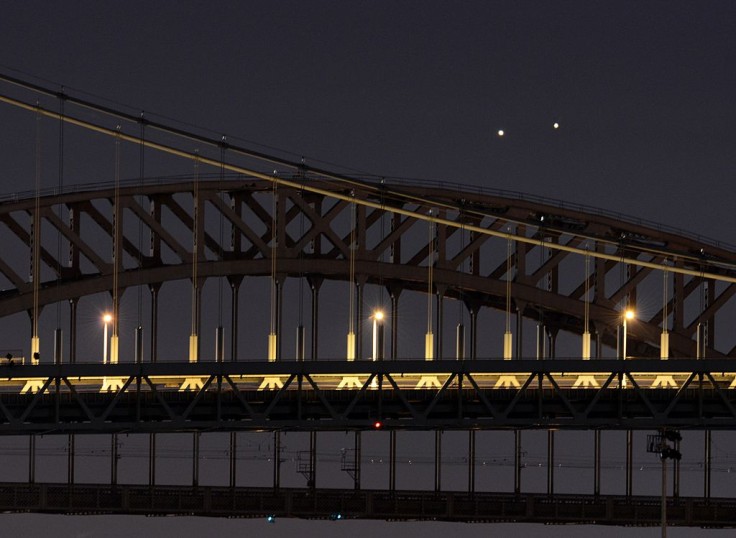Something wonderful will soon happen in the night sky this February before the month of love ends.
Jupiter and Venus will once again hold their annual celestial meeting (conjunction) this month, making them look like they're occupying the same spot in the night sky.
Here's how you can look at them this month:
Jupiter-Venus Conjunction Details

Jupiter and Venus' conjunction is hardly a rare celestial event. According to Space.com's report which cites high regarded calculator of planetary motions Jean Meeus, the two planet's conjunction occurs at mean intervals of 13 months or 398.88 days.
Although the event occurs at regular intervals, its regularity doesn't take anything away from its beauty.
The two planets have been coming closer together since February started. On Feb. 1, Jupiter and Venus are separated by only 29 degrees. By Feb. 20, the distance between the two will just be a little over nine degrees.
To put this distance into perspective, 29 degrees equals three outstretched fists, with one fist being equal to roughly 10 degrees. As such, Jupiter and Venus will be one fist apart from each other come Feb. 20.
Jupiter and Venus are expected to be closest to each other on Mar. 1, when they are 0.52 degrees apart, making this date the best day to look at the conjunction and even take pictures of it.
During this time, Jupiter will shine twice as brightly as Sirius, the brightest star in the sky. Meanwhile, Venus will shine six times brighter than Jupiter, making the event easily noticeable.
The moon will also play a part in the conjunction, albeit a minor one. According to the Sky At Night Magazine, the moon will appear about 8 degrees above and to the left of Venus while it is in its waxing crescent phase, with it appearing as a sliver of light in the night sky being only 3% lit.
The moon will appear alongside Jupiter and Venus until Feb. 23. During which, it will transition to its waxing half-moon phase.
How To See
The Edelman Planetarium at Rowan University mentioned that people could spot the two planets as they move closer to each other in the western sky an hour after sunset. Although using telescopes and binoculars aren't needed to watch the two planets slowly come close, they do enhance the experience.
Using a telescope to see the conjunction happen is recommended to see the two planets clearly. On a good day, a telescope lets people see the planets' finer details, while they would look blurry on a bad day.
A pair of binoculars can also give people a good look at the planets if no telescope is available, though don't expect any fine details to appear.
People's view changes with time depending on their location on the globe. As such, Earth Sky recommends people visit Stellarium for a more precise star chart to locate where Venus and Jupiter will appear in the night sky.
Related Article : Launch of Russia's Uncrewed Soyuz MS-23 Will Be Delayed to March









